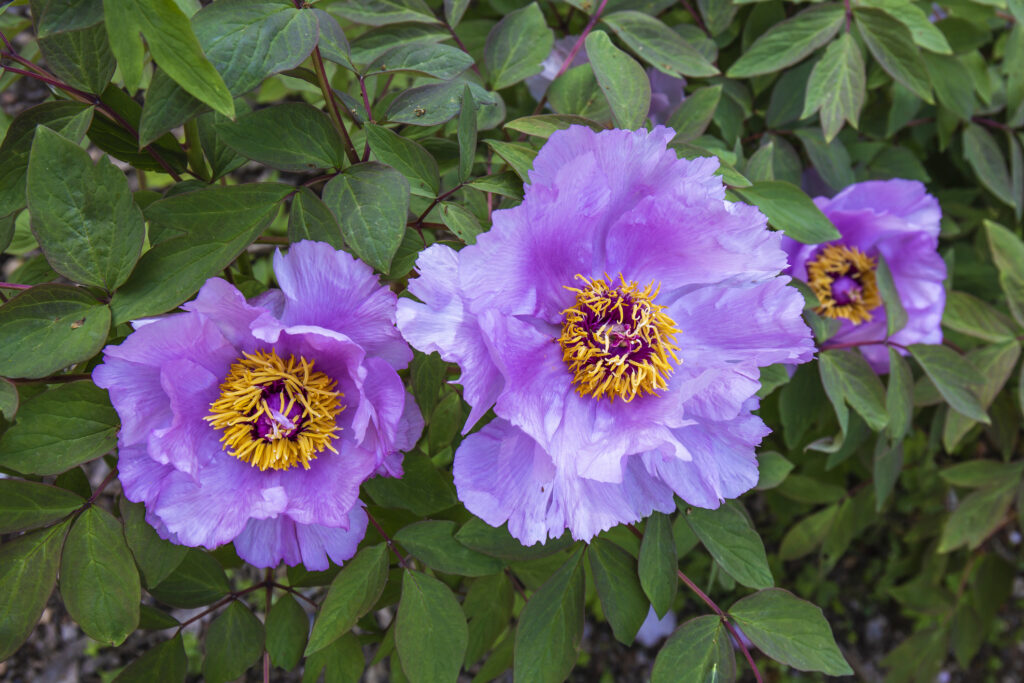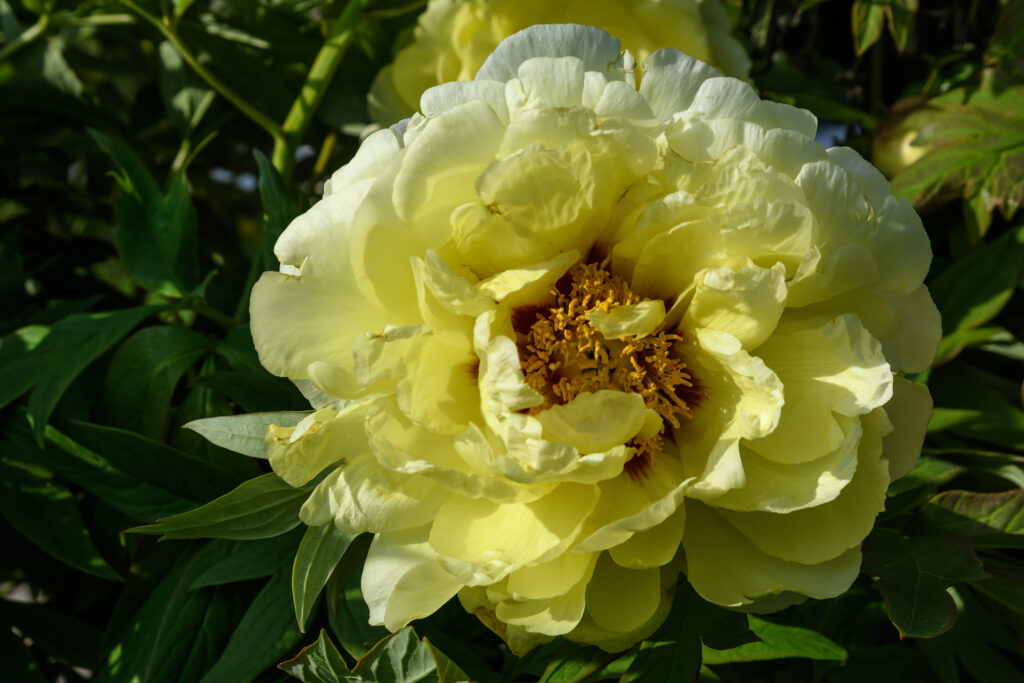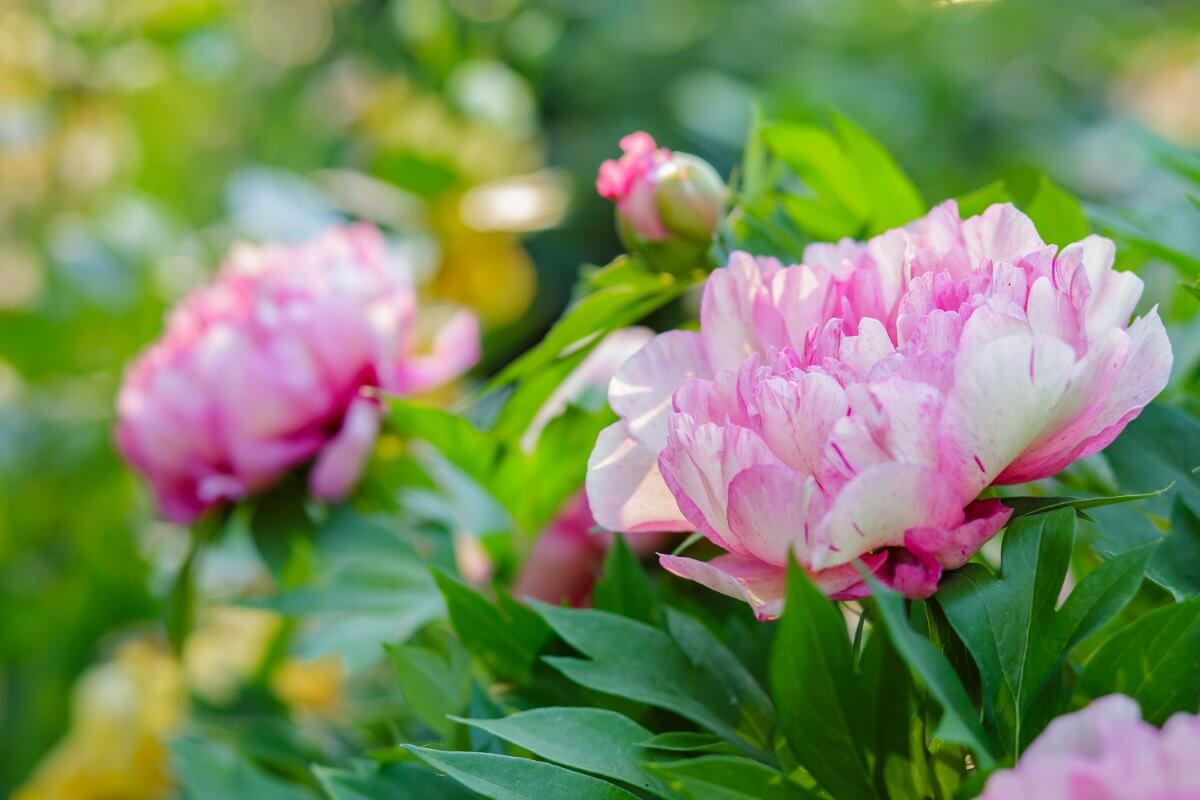Peonies are perennials that come back every year blooming from spring to summer. They are long-lived investments, not to be dealt with haphazardly. Peonies can live over 100 years and still look great! Here are some things you need to keep in mind if you want to grow beautiful peonies.
With their sumptuous, fluffy blooms in shades of white, pink, red, and yellow, peonies are one of the highlights of the spring garden. However, achieving a bountiful display of flowers requires meeting these plants’ particular growing needs, especially when it comes to water. Knowing how much water peonies need and when is key to success. Read on for a complete guide to peony irrigation.
Water Needs of Newly Planted Peonies
When you first plant a peony root division, generous watering is crucial to help establish the transplants and spur root growth. Here are some tips:
-
New peony roots need about 1 inch of water per week from rain or irrigation during the first year. More may be needed in very hot, dry weather.
-
Water thoroughly right after planting peonies. This removes air pockets and settles the soil.
-
Add a 2-4 inch layer of organic mulch around newly planted peonies to retain moisture
-
Check soil moisture daily the first week, then weekly. Insert your finger 1-2 inches down to check.
-
If soil is dry, deeply soak the root zone. Avoid frequent shallow watering.
-
Continue weekly deep watering the entire first year, adjusting for rainfall.
Proper irrigation in the first year encourages strong root development in your new peony plants. Once established, they will be able to tolerate some drought.
Mature Peony Water Requirements
As peonies mature, their water needs decrease somewhat but regular irrigation is still vital, especially while buds are forming and during bloom time. Here are tips:
-
Mature peonies need about 1-2 inches of water weekly from irrigation or rainfall during the growing season.
-
Check soil moisture before watering. Insert a finger 1-2 inches down to test.
-
Water deeply around roots when top few inches of soil become dry. Avoid frequent light watering.
-
Deeply soak the root zone, then allow the soil to partially dry out before watering again.
-
Increase frequency during bud formation and flowering time if rainfall is lacking.
-
Reduce watering frequency after blooms fade to encourage dormancy in fall.
With proper irrigation, your established peony plants will thrive and produce an abundance of spectacular blooms year after year.
Signs Your Peonies Need More Water
In addition to direct soil moisture checks, observing the peony’s growth and appearance will reveal its water needs. Signs your peonies are thirsty include:
-
Wilting or drooping leaves and buds
-
Leaves browning or crisping at margins
-
Lackluster, undersized blooms
-
Fewer flowers than normal
-
Stunted or reduced new growth
-
Overall lackluster appearance
If you notice any of these symptoms, inspect soil moisture and water thoroughly if needed. Drought stressed plants are more prone to pest and disease problems as well.
Watering Methods for Peonies
When watering peonies, focus on deeply soaking the root zone rather than frequent light sprinklings. Here are some recommended irrigation methods:
-
A soaker or drip hose placed around the base of plants allows water to slowly penetrate the roots.
-
Direct the spray of a garden hose fitted with a nozzle around the plant bases.
-
A deep root fork or soil needle allows you to inject water directly into the root zone.
-
For large peony plantings, overhead sprinklers may be necessary. Water early in the day so leaves dry quickly.
-
Avoid overhead watering when possible to discourage foliar diseases like botrytis.
Proper peony irrigation provides your plants with sufficient moisture while keeping leaves dry and allowing proper air circulation.
Tips for Watering Peonies
Follow these best practices for watering peonies successfully:
-
Check soil moisture before irrigating to avoid overwatering.
-
Deeply soak the root zone, then let soil partially dry before repeating.
-
Water early in the day so leaves and flowers dry before nightfall.
-
Avoid getting water on buds and blooms to prevent diseases.
-
Increase frequency during critical times like bud set and flowering.
-Mulch around plants to conserve moisture and suppress weeds.
-
Adjust watering for weather and reduce in fall to encourage dormancy.
-
Group plants with similar needs together for easier irrigation management.
Understanding peonies’ seasonal water requirements ensures healthy, thriving plants from the time you plant the roots through years of spectacular blossoms. A little attentive care goes a long way.
For even more peony growing tips, check out our complete guides on fertilizing, planting, and more! With the right knowledge, you can have a flourishing peony garden that blooms in resplendent color and beauty year after year.
Choosing A Planting Location For Peonies

The place where they are planted should be right for the type of plant and not be occupied by anything else. Most peonies prefer full sun but here is a helpful list by peony type.
- Herbaceous, plant in full sun to part shade
- Tree (woody), plant in partial shade
- Itoh (Intersectional), plant in full sun to part shade
How To Plant Peonies

Never plant peonies too deep! Place the root so that the eyes are facing upward. In most locations, eyes should only be 1. 5 to 2 in. below the soil. For most varieties, space the peony tubers 3 to 4 feet apart.
Top Tip – Once planted, NEVER disturb them. They resent being moved and will sulk for the next whole year.
People who grow peonies often say, “The first year they sleep, the second year they leap, and the third year they bloom.” This gives the gardener a basic understanding of how Peonies will behave once planted. Peonies don’t give you instant gratification, but they live very long and can bloom beautifully for generations if you take good care of them.

Peonies should receive about 1 in. of water per week, similar to that of a vegetable garden or rose bush. This volume equates to approx. 2. 5 to 3 gal. of water per plant. Peonies need to be watered regularly at first to get established, but after a few years they will be able to handle less water.
7 Peony Care Tips
FAQ
Can peonies be overwatered?
Should I water my peony every day?
Do peonies like sun or shade?
Do peonies like wet or dry soil?
How much water does a peony need?
Peonies are drought tolerant for short periods after establishment but best growth and healthier roots stem from consistent watering. On average, plants need 1 inch (2.5 cm.) of water per week. The simplest way to test peony water needs is to touch the soil.
How often should you water peonies?
There are soil moisture testers you can purchase if you have trouble telling when it’s time for watering peonies. A good rule of thumb is to deeply water every 10 to 14 days for mature plants. Young plants that are just starting should get nearly twice as much water. Avoid watering peonies overhead.
Do peonies need to be watered?
When planting in containers, your Peonies will rely on you for water. Containers dry out far quicker, especially in summer, and need to be consistently watered to avoid wilting and browning leaves.
When should you water a peony plant?
If you must water on top of the foliage, do so when the plant has time to dry before night. A drip line makes an excellent source of peony irrigation and can even be set to a timer to deliver just enough moisture at exact intervals. Consider using an organic mulch around peonies.
- The Ultimate Guide to Growing Strawberries in Raised Beds - August 8, 2025
- No-Dig Garden Beds: The Easiest Way to Grow a Beautiful Garden - August 6, 2025
- How to Protect and Preserve Wood for Raised Garden Beds - August 6, 2025

